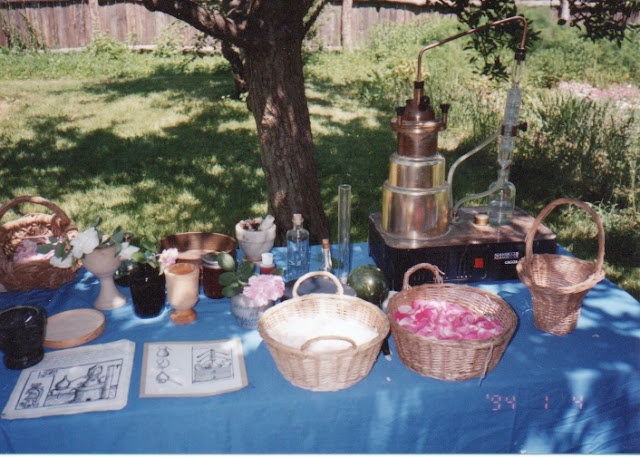Sloped perfectly south,
on a rise of Delaware River silt,
a bend in the Delaware River, just below the falls at Trenton, where the fresh water of the river still rises and falls with the ocean tides, following the moon, the Kitchen Garden at Pennsbury Manor
is perfectly placed.
It is a colonial Revival garden, really, reconstructed in homage to Penn in the 1930's as one of the last big WPA projects... its herringbone brick paths probably inaccurate for the 17th century...
(Penn did not even brick the back of the Manor House)
But still, the geometry, the scale of beds to path, the beautiful prospect...
Although the kitchen garden is not bursting with beds of vegetables and herbs (as it would have in Penn's time) and there are hardly any flowers in the front terrace garden, where the tidily clipped topiaries of my tenure have grown into shaggy beasts, it is still evocative. I imagine few visitors stop to marvel at the square terrace, or wonder at the work it took to create this flat level court, BY HAND, but there is a still quiet rightness to this place, evident to even the untutored guest.
I have not been back here, where I labored so many happy hours/ years,
since I retired in 2003.
Budget cuts and personnel lay-offs can be seen in the landscape, looking slightly sad and unkempt, but a closer inspection reveals that some things have remained: the Orris Root
 |
| Rosemary cold frames without glass 'lights' |
 |
| The dipping well, adorned with buckets and (20th century) watering cans. Beyond the fence is the Delaware River. |
 |
| Milk Thistle is heavily armored with thorns and spikes, perhaps one reason it has persisted here for so many years |
Milk Thistle
Silybum marianum
has been used for the liver for over 2000 years. Compounds from the seeds help protect the liver, according to James Duke, against damage from alcohol and hepatitus, and can even regenerate damaged liver cells! It protects the liver from industrial toxins, solvents, muchroom toxins, etc.
According to David Hoffmann in Medical Herbalism, milk thistle has no reportsd side effects or counterindications, and is considered safe for us by lactating Moms; hence the name. Dosage: up to 600/mg day of extract or (Commission E) 12 -15 grams seed.
 |
| I remember planting these. |
Going through the archives, I discovered this Master List for the Kitchen Garden, as well as a selection of pictures of happy days in period clothing with my girls....so many wonderful memories.
 |
| Xina in her first period clothing; a reproduction of the Clive House Mantua from 1688 |
 |
| Dory with a new lamby |
 |
| Distilling roses as a demonstration for school children, June 1998 |
 |
| Gillyflowers in pots on the dipping well, 1998. Dory and Nick Fritz cleaning out the dipping well, always a favorite activity (money!) |
 |
| Dory 1998 Perfect afternoon light |
 |
| Xina, airborne, in the Clive House Matua, 1994 |






No comments:
Post a Comment